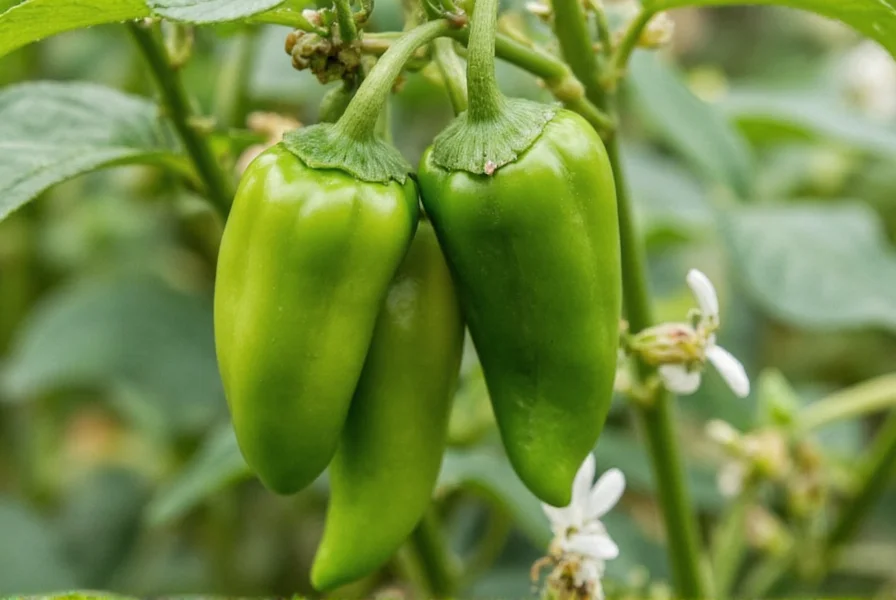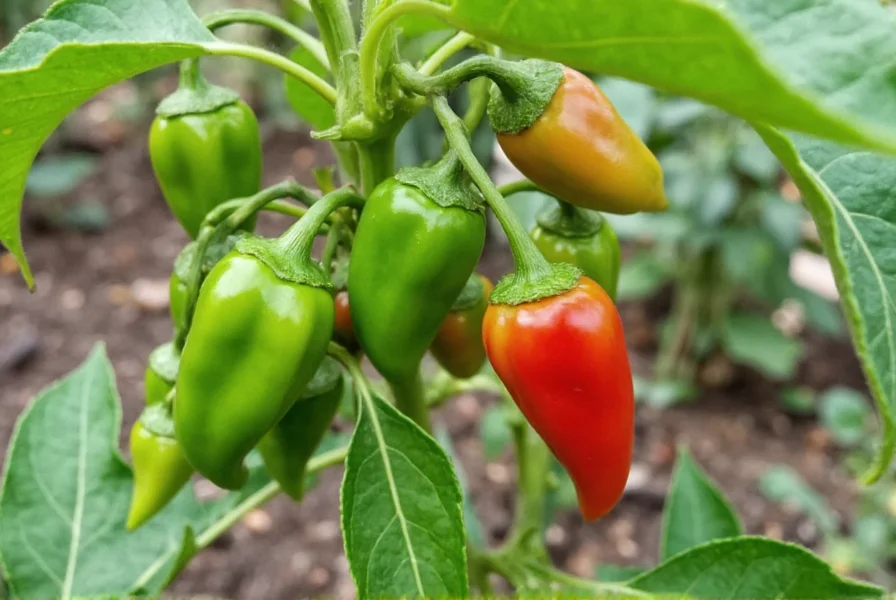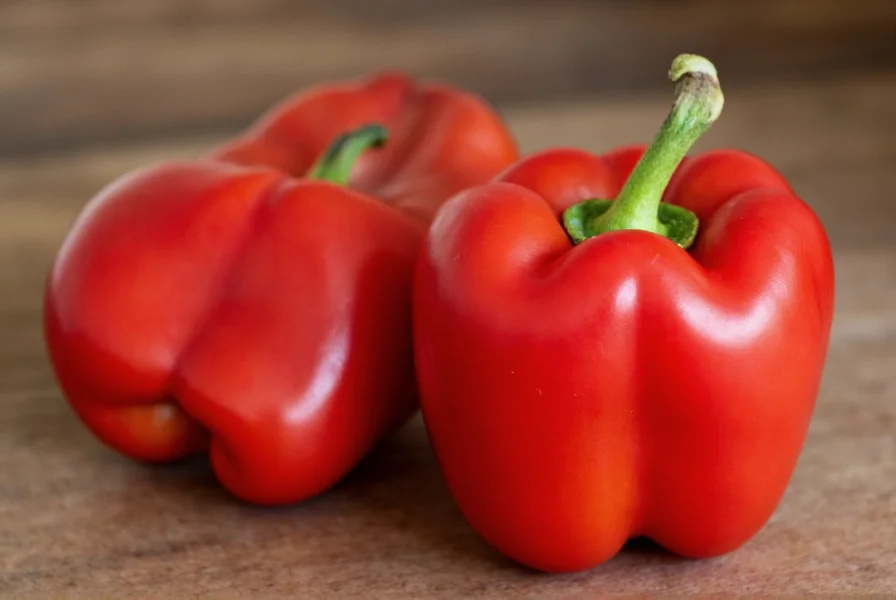The Peter pepper stands out in the world of chili varieties not just for its appearance but for its rich flavor profile and gardening characteristics. This heirloom cultivar belongs to the Capsicum annuum species and has been cultivated since at least the early 20th century. Gardeners and chili enthusiasts prize the Peter pepper for its reliable production, distinctive shape that develops as the fruit matures, and its balanced heat that makes it versatile in the kitchen.

Botanical Characteristics and Identification
Measuring typically 3-4 inches in length, the Peter pepper starts green and matures to a vibrant red. The fruit features a distinctive curved shape with a bulbous head and tapered end that gives it its characteristic appearance. The skin is somewhat wrinkled when mature, and the plant produces white flowers typical of many chili varieties. The Peter pepper plant grows to about 2-3 feet tall and spreads approximately 18-24 inches, making it suitable for container gardening as well as traditional garden beds.
| Characteristic | Details |
|---|---|
| Scientific Name | Capsicum annuum 'Peter' |
| Heat Level (Scoville) | 1,000-5,000 units |
| Mature Length | 3-4 inches |
| Days to Maturity | 70-80 days from transplant |
| Plant Height | 24-36 inches |
Heat Level and Flavor Profile
When evaluating peter pepper heat level, it falls firmly in the medium category on the Scoville scale. At 1,000-5,000 Scoville heat units, it's comparable to a jalapeño but often milder on the lower end of that spectrum. The flavor profile features earthy, slightly sweet notes with traditional chili pepper characteristics. Many gardeners report that the heat intensifies slightly as the peppers fully mature and turn red. This moderate heat level makes the peter pepper scoville rating appealing to those who enjoy some spice without overwhelming heat, perfect for peter pepper culinary uses in family-friendly dishes.
History and Origin
The Peter pepper's origins trace back to Texas, where it was documented as early as the 1910s. Some historical records suggest it may have European roots that were brought to North America. The unusual name reportedly comes from the pepper's distinctive shape, though the exact etymology remains somewhat mysterious. As an heirloom variety, the Peter pepper has been passed down through generations of gardeners, maintaining its genetic purity without modern hybridization. This historical significance contributes to its appeal among heirloom vegetable enthusiasts searching for authentic peter pepper seeds for sale from reputable seed savers.
Growing Peter Peppers Successfully
For those interested in how to grow peter peppers, the process follows standard chili cultivation practices with some specific considerations. Start seeds indoors 8-10 weeks before the last frost date, maintaining soil temperatures around 75-85°F for optimal germination. The peter pepper plant care requires well-draining soil with plenty of organic matter and consistent moisture without waterlogging. These plants thrive in full sun and benefit from regular feeding with a balanced fertilizer. When transplanting outdoors, space plants 18-24 inches apart to allow for proper air circulation. Many gardeners report that providing support with stakes or cages helps manage the plant's growth habit and prevents branches from breaking under the weight of mature peppers.

Culinary Applications and Recipe Ideas
The versatility of peter pepper culinary uses extends beyond its novelty appearance. Fresh Peter peppers work well in salsas, where their moderate heat adds flavor without overwhelming spice. They're excellent for pickling, which preserves their distinctive shape while mellowing the heat slightly. Many hot sauce makers incorporate Peter peppers for both visual interest and flavor complexity. When dried, they can be used similarly to other medium-heat chilies in rubs and spice blends. For those exploring creative peter pepper recipes, consider stuffing them with cheese or grain mixtures, adding them to Bloody Mary cocktails for a spicy kick, or using them as a conversation-starting garnish for appropriate occasions.
Where to Find Peter Pepper Seeds and Plants
Finding authentic peter pepper seeds for sale requires some research, as this heirloom variety isn't typically available in mainstream garden centers. Specialty seed companies focusing on heirloom varieties often carry Peter pepper seeds, particularly those emphasizing unusual or novelty chilies. Online seed exchanges and gardening forums dedicated to chili cultivation can also be valuable resources. When purchasing seeds, look for reputable sellers who can verify the seed's origin and purity. Some farmers' markets, particularly in southern states, may offer live Peter pepper plants during the growing season. For those interested in growing from seed, starting with quality peter pepper seeds ensures you'll experience the true characteristics of this unique variety.
Frequently Asked Questions
How hot is a Peter pepper compared to other common chili varieties?
The Peter pepper registers between 1,000-5,000 Scoville heat units, placing it in the medium heat category. It's generally milder than a typical jalapeño (2,500-8,000 SHU) but hotter than banana peppers (0-500 SHU). The heat level can vary based on growing conditions, with stressors like drought often increasing capsaicin production. Most people describe the heat as building gradually rather than being immediately intense.
What are the ideal growing conditions for Peter pepper plants?
Peter peppers thrive in warm conditions with at least 6-8 hours of direct sunlight daily. They prefer well-draining soil with a pH between 6.0-7.0 and consistent moisture (but not waterlogged conditions). Start seeds indoors 8-10 weeks before last frost, maintaining soil temperatures of 75-85°F. When transplanting outdoors, space plants 18-24 inches apart in a location protected from strong winds. These plants typically reach 2-3 feet in height and produce best when temperatures stay between 70-85°F during the day.
How long does it take for Peter peppers to mature from seed?
From seed to harvest, Peter peppers typically require 90-100 days under optimal conditions. When started indoors 8-10 weeks before the last frost date, you can expect to see flowers about 6-8 weeks after transplanting outdoors, with the first peppers ready for harvest approximately 70-80 days after transplanting. The peppers will start green and gradually mature to red over 2-3 weeks. For the most intense flavor and heat, allow peppers to fully ripen to red on the plant before harvesting.
Are Peter peppers safe to eat despite their unusual shape?
Yes, Peter peppers are completely safe to eat and are enjoyed by chili enthusiasts worldwide. The distinctive shape is purely a natural characteristic of this heirloom variety and doesn't affect edibility or safety. Like all chili peppers, they contain capsaicin which creates the spicy sensation, but they fall in the moderate heat range (1,000-5,000 Scoville units). As with any food, practice proper food handling, wash peppers before use, and avoid touching your face after handling hot peppers. The novelty appearance sometimes causes confusion, but it's simply a naturally occurring fruit shape.
What are the best culinary uses for Peter peppers?
Peter peppers work well in numerous culinary applications thanks to their moderate heat and distinctive shape. They're excellent for pickling, which preserves their unique appearance while adding tangy flavor. Fresh Peter peppers add visual interest and balanced heat to salsas, guacamole, and Bloody Mary cocktails. They can be stuffed with cheese or grain fillings, roasted for sandwiches, or dried and crushed for spice blends. Many hot sauce makers value them for both flavor contribution and visual appeal in finished products. Their moderate heat level makes them versatile for dishes where you want noticeable chili flavor without overwhelming spice.











 浙公网安备
33010002000092号
浙公网安备
33010002000092号 浙B2-20120091-4
浙B2-20120091-4